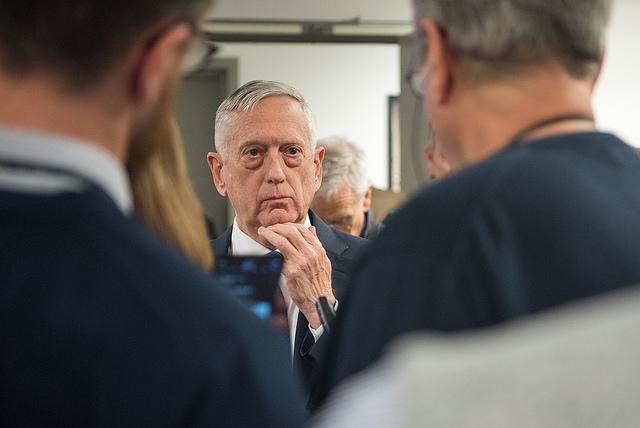
The US National Defense Strategy paper, which was unveiled by Defense Secretary James Mattis on 19 January, is a brutally frank statement of the threats facing America.
This is the Pentagon’s first new defence strategy in a decade and it carries the personal endorsement of Mattis, who proclaims that it is ‘my intent to pursue urgent change’.
The paper stresses that great-power competition, not terrorism, is now the primary focus of US national security. The US is emerging from a period of strategic atrophy, aware that its competitive military advantage has been eroding. Sixteen years of war, the longest continuous run of armed conflict in the nation’s history, ‘has created an overstretched and under-resourced military’, Mattis says.
The central challenge to US security is the re-emergence of long-term, strategic competition by what the paper calls ‘revisionist powers’. It is increasingly clear that ‘China and Russia want to shape a world consistent with their authoritarian model’—gaining veto authority over other nations’ economic, diplomatic and security decisions.
China is leveraging military modernisation, influence operations and predatory economics to coerce neighbouring countries and reorder the Indo-Pacific region to its advantage. Beijing will continue to pursue a military modernisation program ‘that seeks Indo-Pacific regional hegemony in the near term and displacement of the United States to achieve global preeminence in the future’.
Russia seeks veto authority over nations on its periphery ‘to shatter the North Atlantic Treaty Organization and change European and Middle East security and economic structures to its favor’. The subversion of democratic processes in Georgia, Crimea and eastern Ukraine is serious enough, ‘but when coupled with Moscow’s expanding and modernizing nuclear arsenal the challenge is clear’.
Thus, the US is facing increased global disorder with a security environment that’s more complex and volatile—including from rogue regimes such as North Korea and Iran—than any it has experienced ‘in recent memory’.
The new strategy commits the Department of Defense to build a more lethal joint force, strengthen alliances, and radically reform the department’s business practices. Mattis acknowledges that failure to meet these three key objectives will result in decreasing US global influence. And without sustained and predictable investment in its forces, the US will rapidly lose its military advantage.
For decades, the United States has enjoyed uncontested or dominant superiority in every operating domain. Mattis observes that in the past the US could generally employ its forces when it wanted, assemble them where it wanted and operate them how it wanted. Today, however, that’s no longer the case and every domain is contested.
Long-term strategic competition with China and Russia requires both increased and sustained investment because of the magnitude of the threats they pose to US security and the potential for those threats to increase in the future. Deterring or defeating such long-term strategic competitors is fundamentally different from managing the regional adversaries that were the focus of previous US strategies in the post–Cold War era.
So, what are the implications of all this for Australia? The great strength of this US defence strategy is the realistic geopolitical picture it paints of the world. It is decidedly grimmer in its outlook than either the 2016 Australian defence white paper or last year’s foreign policy white paper.
This should be a wake-up call for Australia. From Washington’s perspective, China isn’t the only threat. While Russia might be a weaker power than China at present, it is a more dangerous one and Canberra needs to understand that.
Moreover, while the Indo-Pacific is ranked ahead of Europe and the Middle East in the Pentagon’s list of key regions where aggression needs to be deterred, there’s no evidence that the US is capable of defeating two major-power regional contingencies—for example, China and Russia—at the same time.
As might be expected, the attention given to the strategic outlook is much more persuasive than the sections of the paper dealing with the future force structure and the urgent need to reform the performance of the Department of Defense. Little is offered other than generalities about the need to rebuild military readiness and field ‘a more lethal force’.
As for reform of the department, there are lots of meaningless modern management words used about the need to ‘drive budget discipline and affordability to achieve solvency’ and ‘streamline rapid, iterative approaches from development to fielding’. But the fact remains that the Pentagon has for decades resisted introducing a culture of performance in which results and accountability really matter.
But it isn’t only the Pentagon that’s recalcitrant in this regard. As Mattis said at the launching ceremony, ‘no enemy in the field has done more harm to the readiness of the US military’ than the combined impact of defence spending cuts, worsened by operating under continuing congressional resolutions for nine of the last 10 years.
All of this suggests to me that Australia needs to refocus on its own region of primary strategic concern, building the military capability to ensure that we can deny our vulnerable approaches to any potential adversary—including China.